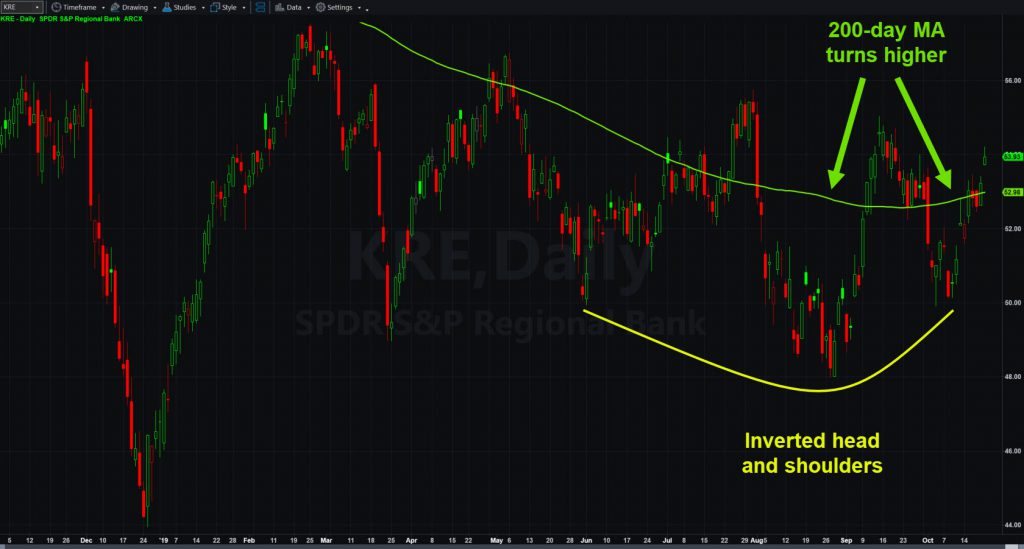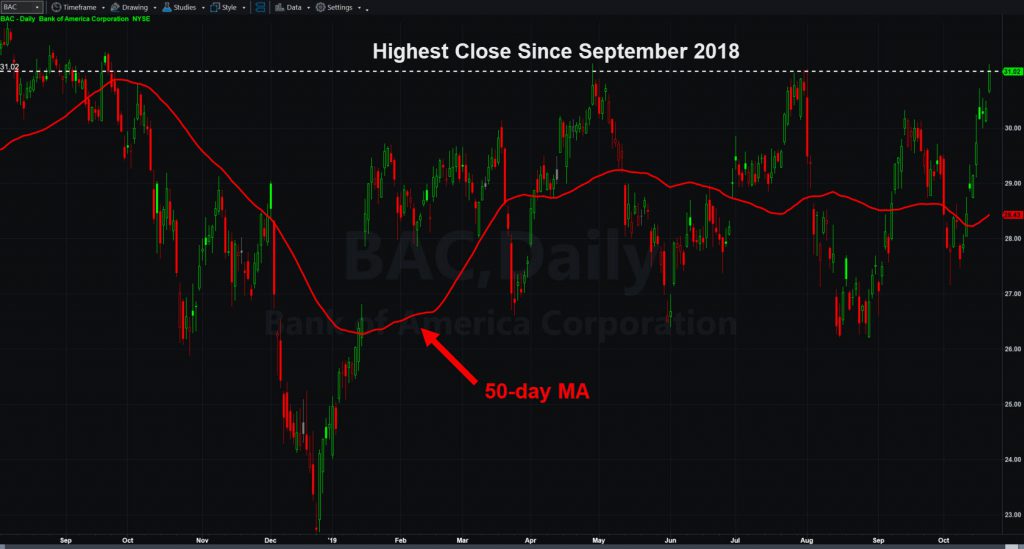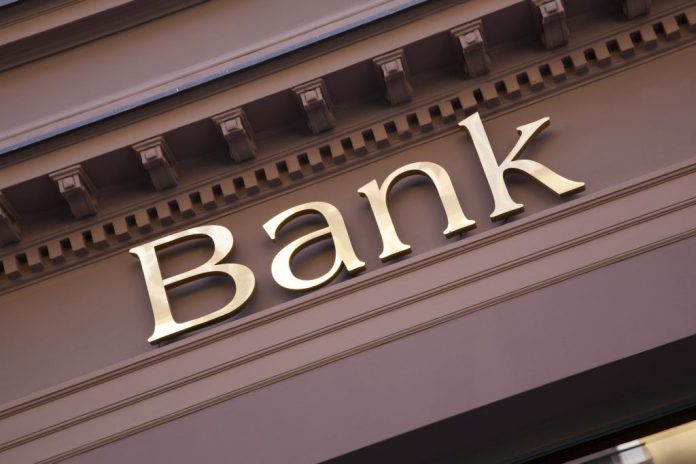The yield curve flattened over the summer as fear swept the market. But now as it goes the other way, sentiment may improve in major banking stocks.
The yield curve is the relationship between the two-year and 10-year Treasury notes. People buy 10-year notes when they’re scared or worried about a recession. That pushes down its yield and triggers warning signs about the economy.
A flat or inverted yield curve hurts banks because they borrow money at short-term rates and invest at longer-term rates. It’s a simple cause and effect that directly steers results across the entire industry.
Did you know the scenario has been shifting more recently? The yield curve has been steepening for the last month, and yesterday hit its highest level since July 30. The change has occurred as longer-term Treasuries lose value, lifting their yields.
Next, don’t forget there was a virtual stampede of money into bonds over the summer as investors worried about President Trump’s trade war against China. Studies from Bank of America-Merrill Lynch, FactSet, Morningstar and AAII all confirmed this trend of risk aversion across the market.

Will Banks Break Out?
But what happens if this “fear bubble” breaks and money flows out of Treasuries? The most likely result would be a steeper yield curve. And then investors may look more favorably on banking stocks.
A look at the price chart shows that banks got trapped in a range as the yield curve flattened. That creates the possibility of the yield curve steepening at the very same time banks attempt to break out of their range. The bank index also just formed a potential inverted head-and-shoulders pattern.
TradeStation clients may find this interesting because bank stocks have strong options liquidity. That creates more opportunities to trade relatively small moves. Here are some of the most active symbols in the financial space, according to RadarScreen®:
- Bank of America (BAC): The country’s No. 2 lender averages about 222,000 options contracts per session in the last month. That makes it fourth-busiest underlier in the S&P 500 behind Apple (AAPL), Advanced Micro Devices (AMD) and Netflix (NFLX).
- SPDR Financial ETF (XLF): This fund, which is 42 percent dedicated to banks, trades about 145,000 options contracts.
- JPMorgan Chase: The biggest U.S. bank trades about 75,000 contracts daily.
- Citigroup (C): The third-largest lender in the U.S. averages about 67,000 options contracts.
- Wells Fargo (WFC): The country’s No. 4 bank trades about 65,000 contracts daily.
In conclusion, banks have reported earnings and are trading at historically low multiples. They’ve been out of favor for several years, but a potential steepening of the yield curve could make investors interested again.
Disclosure: This post is intended for educational purposes only and shouldn’t be isn’t a trade recommendation. Options trading may not be suited for all investors.




























